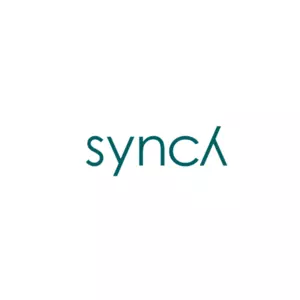This is the third article on the subject “Blockchain, Cryptocurrency, NFT:s and the Law”, published on Lexiqon. The first article was published on 1 December 2021 and can be found here and the second article was published on 3 January 2022 and can be found here.
Before I address the legality of an NFT, we need to determine what NFT:s mean digitally. To put it simple: An NFT is a digital representation of an asset in the form of an identification number. Simple as that!
A Non-Fungible Token (NFT) is a representation of a physical or digital object that exists only online, such as a digital work of art. It provides ownership of an object, such as a painting, and it can equally represent a digital object in the form of software application code. I guess many of you have read about the crazy prices being paid for such objects and perhaps you think that it is insane to pay millions of dollars for something digital which can be reproduced infinitely but think of it this way: How come a private person was willing to pay USD 450 million for “Salvadore Mundi” by Leonardo da Vinci (a.k.a. the male Mona Lisa) at an auction in 2017 where you can actually take a photo or an online copy of the painting and have it printed on a photo canvas for USD 100? Where is the rationale behind that? And who has the right to determine that this physical painting is worth more than the GDP of Micronesia?
NFT:s use a digital ledger to provide a public certificate of authenticity or proof of ownership, but do not restrict the sharing or copying of the underlying digital files or the re-creation of identical NFTs. The lack of interchangeability (fungibility) distinguishes NFTs from blockchain cryptocurrencies, such as Bitcoin. You do not care if you own Bitcoin number 100 och 489; they represent the exact same value…but you do care if you won the original NFT or a digital reproduction of it.
An NFT not only reveals the origin of an object that cannot be falsified, but perhaps more importantly, it is able to determine where the material of that object has been located since its creation. It is possible to follow the complete ownership chain (through the blockchain) which is useful and adds value in some instances since the provenience of certain objects are important. An example from the “real” world is that a Cadillac owned by Elvis Presley is far more valuable than a similar Cadillac owned by John Doe.
Is the ownership of an NFT different from the ownership of the rights to the object of which it is composed?
In our society today, we are accustomed to a register the rights to property and some artwork. We have all come across this type of document in our daily lives: A certificate of ownership for a car, a deed to a property or a lease for a house. We know the value of these legal documents. That’s how NFTs could be viewed, although there are some differences in terms of the rights associated with them.
There is a common understanding that an NFT is itself an object. Not quite. As with everything else within law, the boring but correct answer is: It depends. It depends on what kind of underlying object the NFT represents. An NFT can either be the original object or an object that exists only in the digital virtual world, like the 10,000 CryptoPunks where the “cheapest” one on sale right now has an asking price of USD 193,678.01. At the same time, an NFT can be the certificate confirming that you own an identified object in real life, such as real estate or a physical piece of art, like Salvadore Mundi.
How does blockchain help creators of material represented by NFTs?
Since the development of the Internet and peer-to-peer (P2P) networks, creators and the copyright market have tried to find a method to transform an object, copyright it, and show its scarcity and ownership in a digital world. Again, a digital work of art is fungible and very easy to reproduce. A registration system was needed that offered immutability and precedence while showing scarcity on the web. This was only possible after the problem of double spending (i.e. that you sell the same object more than once) was solved by the innovation of blockchain.
An NFT registered on the blockchain makes the material marketed on the web immutable and unmistakable and enables artists to protect their developments in the digital world from counterfeiting and duplication. In this way, blockchain-registered NFTs solve the problems of digital piracy and the high cost of monetary intermediation, to name a few, and make a whole new kind of economy possible. An economy that is not governed by the default trusted, but by those who create and develop value.
What rights does a person need to create an NFT?
The reason for concern in this area is that not all artists and developers own the copyright to their works. Normally, creators do not have to worry about the right to properties or the copyrights to their work because they are the artists.
However, the basic practice of the creator economy is that the rights to a masterpiece, music, etc., are given to numerous different parties: One party may hold the distribution rights, another party has the exhibition rights, another controls the impact rights, and yet another owns the marketing rights. This is especially true for the music industry.
If you develop an NFT of the work in which the copyrights are assigned to all parties, the question becomes: Which of these rights holders would have the appropriate legal status to do this? Can each of the parties involved do this on their own, without the other rights holders? Resolving this issue will take a lot of time, both judicially and legally. In the meantime, these legal issues are not yet resolved, as the hype around NFTs is very new and still gaining ground in various sectors – such as music, video games, physical art markets, and the more recently produced programmable art.
A very interesting part, and perhaps what makes NFTs so exciting is that the real value of NFTs yet has to be found out (ref. Salvador Mundi above).
Who can create NFTs? What exactly does it mean? While blockchain innovation and decentralized markets are developing in parallel, these concerns will most likely be regulated and decided on a case-by-case basis. Currently, it seems difficult to develop a global legislation that includes scenarios in constant change. And global is what it needs to be, considering the global characteristics of digital objects. The ownership may pass from one jurisdiction to another within seconds. And what about tax?
Needless to say, there is still a lot of confusion in the NFT field, not only about what rights developers claim, but also about what buyers acquire with NFTs. Legal analysis is becoming increasingly complicated, especially when it comes to ownership of NFTs, which includes numerous authors and their copyrights.
Another indication is the way platforms have made material available and how content intermediaries deal with NFTs. Most of these intermediaries, who stand between material developers and NFT buyers, must perform their due diligence when building these platforms.
What rights does the purchase of an NFT provide to the acquirer?
When an NFT is purchased, there are three people involved: (i) The creator of the original work, (ii) the developer of the NFT, and (iii) the purchaser of the NFT. Owning an NFT does not however mean that one acquires the legal ownership of the underlying property, but that one only receives the legal ownership of the NFT.
However, since NFTs exist in digital media and in numerous jurisdictions at the same time, or perhaps even in countries where there is virtually no legislation within this field, it is essential for platforms listing NFTs to define the terms. In the best of worlds, the terms they will specify what rights the NFT buyers will receive from the creators.
Here it’s fascinating to understand that you do not acquire ownership of the property itself, nor do you receive the copyrights to that work. And in that sense, the mindset is no different than purchasing a physical work of art on the regular market. When a traditional painting is purchased at auction, the buyer does not get the copyright to the object itself. The buyer can hang the painting on their wall, but not the copyright to that painting unless it was commissioned. No one may develop it or change it except for the owner of the copyright. You may compare this with the 2018 sale of Banksy’s “Love is in the Bin” (“Girl with ballon”) which right after the sale was shredded by the artist himself. Right before the shredding it was sold for MUSD 1,4 and three years later it was sold again for MUSD 25,4(!).
To summarize, when you purchase an NFT, you are only purchasing the rights to the NFT i.e. the ownership rights to connect to the underlying work but you do not have the copyright to use that work – no one can copy, distribute, or perform it unless those rights have actually been transferred. So the legal analysis of an NFT is very much like regular copyrights, as if there were no NFTs at all.
How can the jurisdiction of an NFT be determined?
Suppose that copyright in Sweden is perpetual (meaning that it is permanent/forever), while in Germany it ends with the death of the artist and in Belgium it is valid 50 years after the death of the artist. If NFTs are registered on decentralized blockchain networks, what will the jurisdiction look like? What laws will be applied? What rights should apply to a fully decentralized platform scattered across the Internet? Will the jurisdiction be where the original artist lives, or could it be between the platform and the developer of the NFT? This is yet to be determined. In either case, we will most likely have many jurisdictional issues, especially if it is something that is in the early stages of development.
Final comment
The existing difficulties in determining how the NFT market will go through the courses of legal certainty displays the current development and how young this phenomena is.
How can you tell the intention of the parties in dealing with these brand-new rights if they are different? Will the NFTs be viewed as a new foundation for what currently exists and has been contracted? Or will they be viewed as something that was not included in the previous contracts that provides an opportunity to generate more revenue?
Can someone take ownership of something that already exists to develop something called an NFT for example buy a piece of existing art and put it on the blockchain for sale through the creation of an NFT? Can someone take ownership of an NFT without the consent of the owner of the copyrighted work?
NFTs are definitely evolving from a legal perspective, and the methods for resolving the legal issues and disagreements that will arise have yet to be conceived.



















